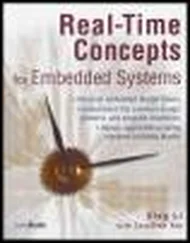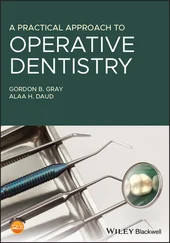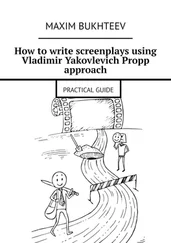This book is not a detailed hardware tutorial. One of the difficulties the embedded developer faces is the huge variety of hardware devices in use today. The user manual for a modern 32-bit processor with some integrated peripherals can easily exceed 1,000 pages. There are no shortcuts. If you need to understand a hardware device from a programmer's point of view, you will need to spend plenty of hours in your favorite reading chair with hardware data sheets and reference guides, and many more hours writing and testing code for these hardware devices!
This is also not a book about the Linux kernel or kernel internals. In this book, you won't learn about the intricacies of the Memory Management Unit (MMU) used to implement Linux's virtual memory-management policies and procedures; there are already several good books on this subject. You are encouraged to take advantage of the "Suggestions for Additional Reading" section found at the end of every chapter.
Filenames and code statements are presented in Courier. Commands issued by the reader are indicated in bold Courier. New terms or important concepts are presented in italics .
When you see a pathname preceded with three dots, this references a well-known but unspecified top-level directory. The top-level directory is context dependent but almost universally refers to a top-level Linux source directory. For example, .../arch/ppc/kernel/setup.c refers to the setup.c file located in the architecture branch of a Linux source tree. The actual path might be something like ~/sandbox/linux.2.6.14/arch/ppc/kernel/setup.c.
Chapter 1, "Introduction," provides a brief look at the factors driving the rapid adoption of Linux in the embedded environment. Several important standards and organizations relevant to embedded Linux are introduced.
Chapter 2, "Your First Embedded Experience," introduces the reader to many concepts related to embedded Linux upon which we build in later chapters.
In Chapter 3, "Processor Basics," we present a high-level look at the more popular processors and platforms that are being used to build embedded Linux systems. We examine selected products from many of the major processor manufacturers. All of the major architecture families are represented.
Chapter 4, "The Linux Kernel: A Different Perspective," examines the Linux kernel from a slightly different perspective. Instead of kernel theory or internals, we look at its structure, layout, and build construction so you can begin to learn your way around this large software project and, more important, learn where your own customization efforts must be focused. This includes detailed coverage of the kernel build system.
Chapter 5, "Kernel Initialization," details the Linux kernel's initialization process. You will learn how the architecture- and bootloader-specific image components are concatenated to the image of the kernel proper for downloading to Flash and booting by an embedded bootloader. The knowledge gained here will help you customize the Linux kernel to your own embedded application requirements.
Chapter 6, "System Initialization," continues the detailed examination of the initialization process. When the Linux kernel has completed its own initialization, application programs continue the initialization process in a predetermined manner. Upon completing Chapter 6, you will have the necessary knowledge to customize your own userland application startup sequence.
Chapter 7, "Bootloaders," is dedicated to the booloader and its role in an embedded Linux system. We examine the popular open-source bootloader U-Boot and present a porting example. We briefly introduce additional bootloaders in use today so you can make an informed choice about your particular requirements.
Chapter 8, "Device Driver Basics," introduces the Linux device driver model and provides enough background to launch into one of the great texts on device drivers, listed as " Suggestions for Additional Reading " at the end of the chapter.
Chapter 9, "File Systems," presents the more popular file systems being used in embedded systems today. We include coverage of the JFFS2, an important embedded file system used on Flash memory devices. This chapter includes a brief introduction on building your own file system image, one of the more difficult tasks the embedded Linux developer faces.
Chapter 10, "MTD Subsystem," explores the Memory Technology Devices (MTD) subsystem. MTD is an extremely useful abstraction layer between the Linux file system and hardware memory devices, primarily Flash memory.
Chapter 11, "BusyBox," introduces BusyBox, one of the most useful utilities for building small embedded systems. We describe how to configure and build BusyBox for your particular requirements, along with detailed coverage of system initialization unique to a BusyBox environment. Appendix C, "BusyBox Commands," lists the available BusyBox commands from a recent BusyBox release.
Chapter 12, "Embedded Development Environment," takes a detailed look at the unique requirements of a typical cross-development environment. Several techniques are presented to enhance your productivity as an embedded developer, including the powerful NFS root mount development configuration.
Chapter 13, "Development Tools," examines many useful development tools. Debugging with gdb is introduced, including coverage of core dump analysis. Many more tools are presented and explained, with examples including strace, ltrace, top, and ps, and the memory profilers mtrace and dmalloc. The chapter concludes with an introduction to the more important binary utilities, including the powerful readelf utility.
Chapter 14, "Kernel Debugging Techniques," provides a detailed examination of many debugging techniques useful for debugging inside the Linux kernel. We introduce the use of the kernel debugger KGDB, and present many useful debugging techniques using the combination of gdb and KGDB as debugging tools. Included is an introduction to using hardware JTAG debuggers and some tips for analyzing failures when the kernel won't boot.
Chapter 15, "Debugging Embedded Linux Applications," moves the debugging context from the kernel to your application programs. We continue to build on the gdb examples from the previous two chapters, and we present techniques for multithreaded and multiprocess debugging.
Chapter 16, "Porting Linux," introduces the issues related to porting Linux to your custom board. We walk through a simple example and highlight the steps taken to produce a working Linux kernel on a custom PowerPC board. Several important concepts are presented that have trapped many newcomers to Linux kernel porting. Together with the techniques presented in Chapters 13 and 14, you should be ready to tackle your own custom board port after reading this chapter.
Chapter 17, "Linux and Real Time," provides an introduction to one of the more exciting developments in embedded Linux: configuring for real time via the CONFIG_RT option. We cover the features available with RT and how they can be used in a design. We also present techniques for measuring latency in your application configuration.
The appendixes cover the GNU Public License, U-Boot Configurable Commands, BusyBox Commands, SDRAM Interface Considerations, resources for the open source developer, and a sample configuration file for one of the more popular hardware JTAG debuggers, the BDI-2000.
You will benefit most from this book if you can divide your time between the pages of this book and your favorite Linux workstation. Grab an old x86 computer to experiment on an embedded system. Even better, if you have access to a single-board computer based on another architecture, use that. You will benefit from learning the layout and organization of a very large code base (the Linux kernel), and you will gain significant knowledge and experience as you poke around the kernel and learn by doing.
Читать дальше












